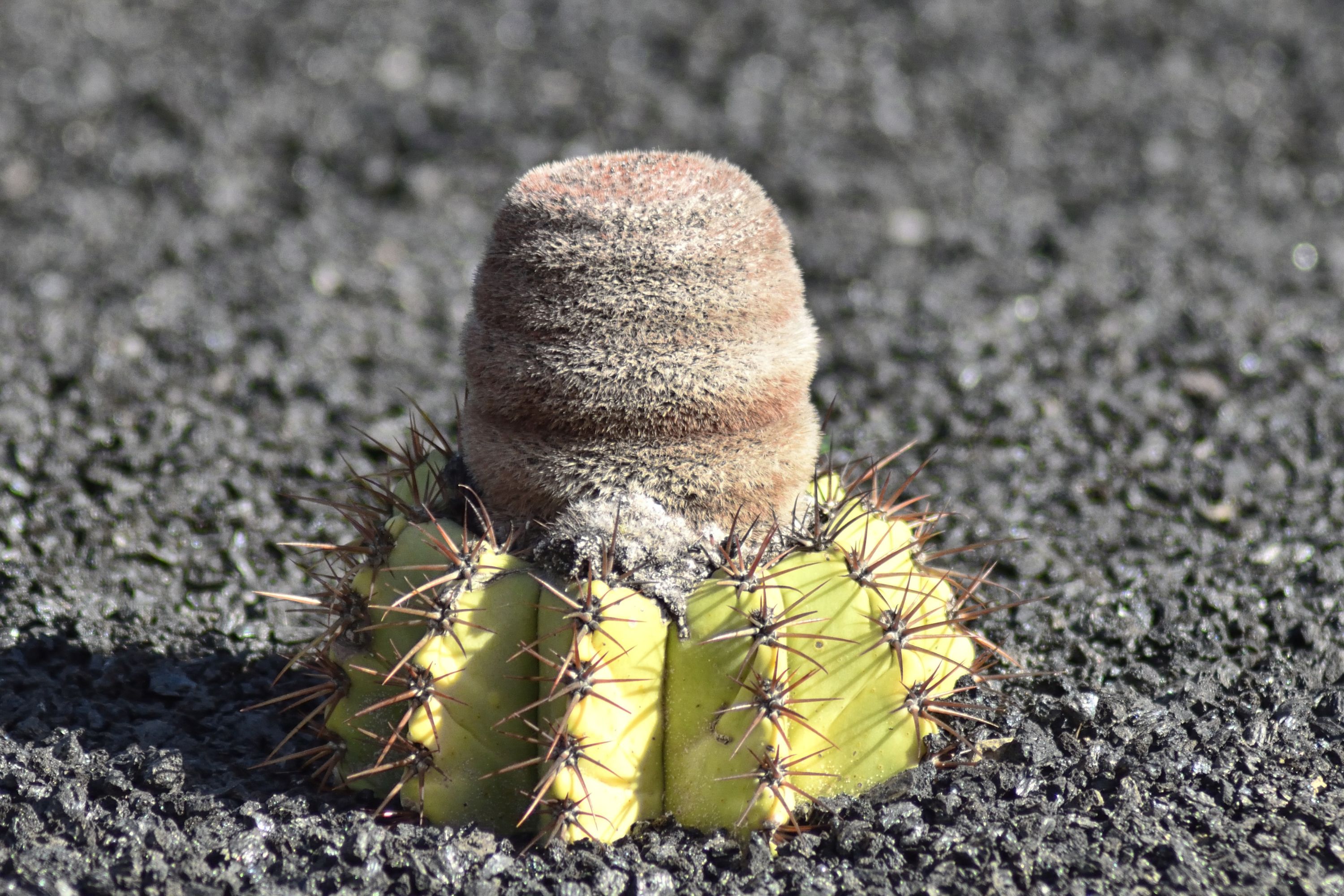Turk's cap cactus
(Melocactus azureus)

Description
Melocactus azureus is a species of cactus. It is endemic to Brazil, where it is known only from Bahia. It is locally abundant but the populations are fragmented and vulnerable to habitat degradation. Melocactus azureus has a striking frosty blue epidermis. It's cylindrical stem is(9-)14-30(-45cm) tall and 14-20 centimeters in diameter, green, grey-green, but never glaucous like subspecies Melocactus azureus ferreophilus with mucilage present in the cortical tissues. It has 9-10 ribs and the spines are black to reddish, overlaid with gray, and some are hooked in seedlings while the central spines are slightly curved to straight and the radial spines are very stout. The flowers are small, 15-23mm long and 4-11 mm in diameter, and pink to magenta, it flowers in spring to late autumn. The fruits are small, white to able pink and seeds are smooth. It has the chromosome number 2n = 44. Melocactus azureus is endemic to central, northern, and easter Brazil at altitudes of 450-800 metres above sea level. This species has a small range and is only in low-lying outcrops of limestone, tt occurs in fragmented populations from a few hundred to millions. A major threat to the species is habitat loss for agriculture, vegetation is destroyed when the surrounding caatinga forest is cleared causing a decline of wild populations. The change has an impact on the outcrops were the species grows as well, making them prone to invasive species. Melocactus (melon cactus), also known as the Turk's cap cactus, is a genus of cactus with about 30–40 species. They are native to the Caribbean, western Mexico through Central America to northern South America, with some species along the Andes down to southern Peru, and a concentration of species in northeastern Brazil. The first species was named by Carl Linnaeus in 1753, as Cactus melocactus. When the genus was separated from Cactus, the pre-Linnaean name Melocactus was used. Acting on the principle of priority, in 1922 Nathaniel Britton and Joseph Rose resurrected Linnaeus' Cactus. However, the 1905 Vienna botanical congress had already rejected the name Cactus, so this name was not available, and Melocactus Link & Otto is the correct genus name. Mature plants are easily recognizable by their cephalium, a wool- and bristle-coated structure at the apex of the plant, containing a mass of areoles from which the small flowers grow.
Taxonomic tree:







